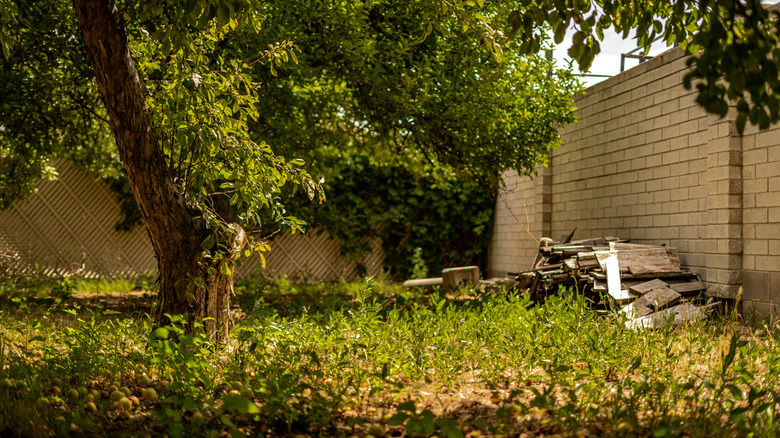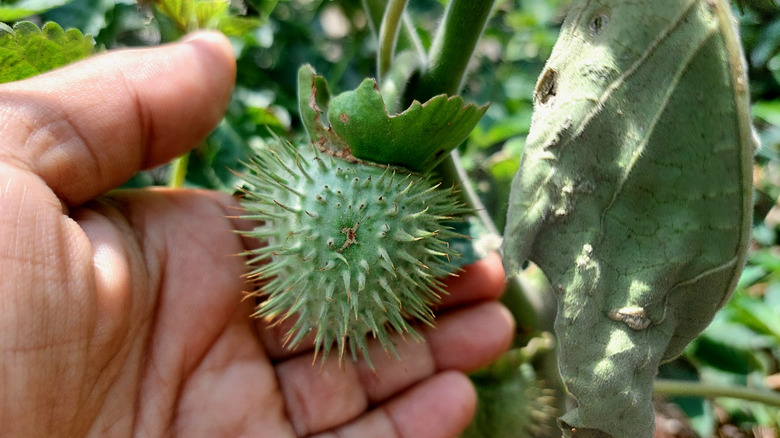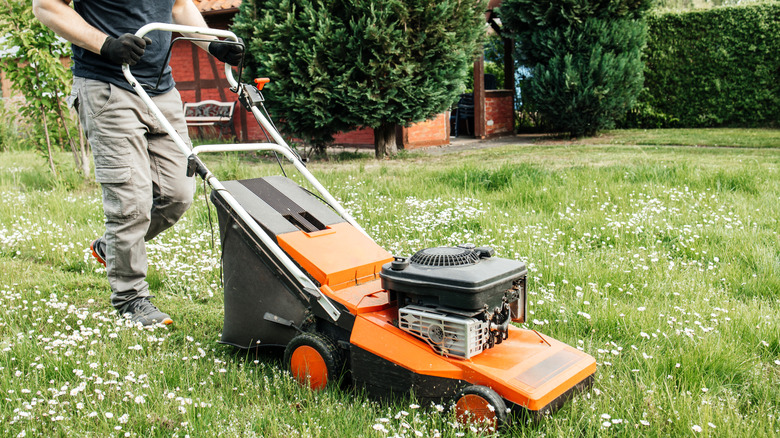The One Weed In Your Lawn You Need To Remove Immediately
We may receive a commission on purchases made from links.
There is a scary weed in your yard that should be destroyed right away. It usually starts with a single sprout, seemingly harmless and easy to miss. One day, it's hugging the edge of your flower bed, and the next, it's taken over the corner of your lawn like it owns the place. Most folks walk past it and wave it off as just another weed. And by the time they realize, it's claimed the spot, stretched up to 5 feet tall, and is now flaunting large, ghostly-white flowers. We're referring to jimsonweed (Datura stramonium). And if there's one plant you need to remove right away to keep your lawn healthy and green, it's this one.
What makes it worse is how deceptively common it's become. Though not native, jimsonweed has now taken root in many parts of the United States. It's popping up in gardens, barn lots, and even fields that were once perfectly clean. And its rapid spread is only a part of the problem. It's also toxic to both humans and animals. Besides, it reeks. Literally. A sharp, nose-crinkling stench follows it wherever it grows.
Why jimsonweed doesn't belong in your yard
There are common garden weeds you pull because they're ugly. Then there are ones you pull because they're dangerous. Jimsonweed firmly belongs in the second category. What makes it truly alarming is that every part of this plant is highly poisonous. Whether it's seeds, the leaves, or the juice inside, ingesting even a small amount can trigger a cascade of terrifying symptoms. And yes, this also includes teas made from its leaves, something that's been mistakenly used in remedies with devastating consequences.
The symptoms of jimsonweed poisoning are severe and can escalate quickly. It can begin with a dry mouth and an intense, unshakable thirst, followed by blurred vision that makes it difficult to see clearly. As toxins spread through the body, vomiting sets in, alongside a rapid heartbeat. In more serious cases, a person may begin to hallucinate. Breathing can become shallow, and without immediate medical attention, loss of consciousness or even death may occur. To a curious child or an unsuspecting dog, jimsonweed might just look like an interesting flower or chew toy. But just one nibble can be life-threatening.
Tips to safely remove jimsonweed before it spreads
If the plants are still young, mowing is a solid first move to remove jimsonweed. Cutting them down early can interrupt their growth cycle and discourage them from coming back. But timing matters. This works before the plant flowers or sets seeds. If you're past that point, hand-pulling is your next best option. Make sure you put on thick rubber gloves, though. The plant is toxic, and you don't want any part of it on your skin.
Once you've pulled it out, roots and all, bag it and seal it tight. For an even safer move, double-bag it to prevent any toxins from spreading. And don't throw it out just yet. Store the bag somewhere safe for at least 12 months before disposal. That gives the seeds time to break down so they don't end up sprouting in a landfill or blowing back into someone else's yard. For larger infestations, a targeted herbicide can help. But always follow label instructions, and make sure it's one that's safe for your surrounding plants, like the FDC Triple Threat Selective Weed Killer. The goal here isn't to temporarily get rid of jimsonweed but make sure it doesn't come back.


